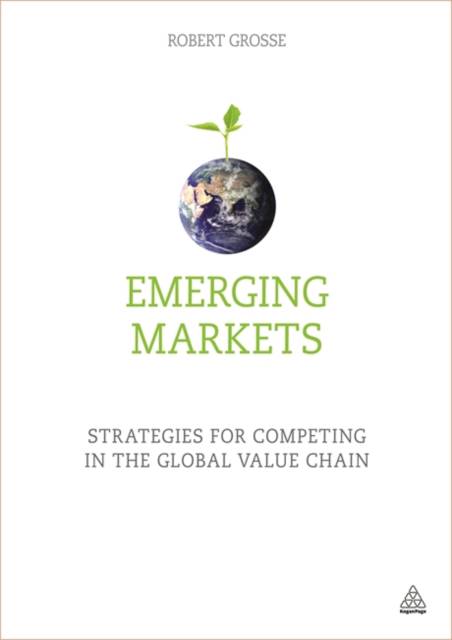
- Afhalen na 1 uur in een winkel met voorraad
- Gratis thuislevering in België vanaf € 30
- Ruim aanbod met 7 miljoen producten
- Afhalen na 1 uur in een winkel met voorraad
- Gratis thuislevering in België vanaf € 30
- Ruim aanbod met 7 miljoen producten
Zoeken
Emerging Markets
Strategies for Competing in the Global Value Chain
Robert Grosse
Hardcover | Engels
€ 253,95
+ 507 punten
Omschrijving
The traditional dominance of international markets by companies from the US, Western Europe and Japan can no longer be taken for granted. Emerging market economies, from the powerhouse Chinese economy (set to pass the US in national income by 2020) to dynamic players such as Mexico, South Africa and Indonesia, are rapidly changing the competitive landscape.
Companies that can successfully enter these emerging markets may reap rewards and benefits from cost reductions and market opportunities. By understanding their positioning in the global continuum of companies and customers - the global value chain - businesses can build their strategies for better competition, more effective resource allocation, cost reduction, and a heightened awareness of the risks and benefits. Packed with in-depth case studies of multinationals from both sides of emerging markets, including: Accenture, Walmart, Google, Nike, Novartis, PetroChina, Embraer, Tata Group and FEMSA; Emerging Markets is essential reading for anyone looking to understand the new competitive landscape and how they can maximise the business opportunities available. Online supporting resources include lecture slides that align with each chapter.Specificaties
Betrokkenen
- Auteur(s):
- Uitgeverij:
Inhoud
- Aantal bladzijden:
- 272
- Taal:
- Engels
Eigenschappen
- Productcode (EAN):
- 9781398695788
- Verschijningsdatum:
- 26/01/2021
- Uitvoering:
- Hardcover
- Formaat:
- Genaaid
- Afmetingen:
- 170 mm x 244 mm
- Gewicht:
- 635 g

Alleen bij Standaard Boekhandel
+ 507 punten op je klantenkaart van Standaard Boekhandel
Beoordelingen
We publiceren alleen reviews die voldoen aan de voorwaarden voor reviews. Bekijk onze voorwaarden voor reviews.








